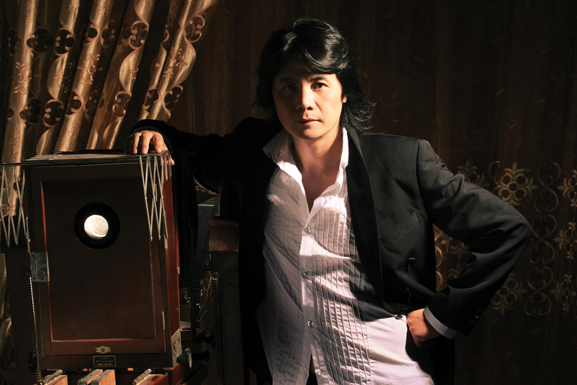A Civic Achievement
Born in Shanghai, Hu is a respected filmmaker, theater director, television show host, and a professor at the Shanghai Theater Academy. “It’s a big honor to be asked to design the Pavilion,” he asserts. “It’s almost as if you are doing a big thing for your hometown.”
It was just the end of last July when Hu received a phone call asking if he had any ideas for the pavilion. The multitalented creator consulted with Shanghai Mayor Han Zheng to find out what the city had in mind: something that captured the speed and history, and future of the world capital. Then, he was named the artistic director of Shanghai Pavilion.
At the Shanghai Pavilion, Hu uses vehicles, which he explains “take us on a 157-year journey from past to present and future.” The exhibit takes place in an oval theater, with simulators and film images making up the whole space. “The audience first walks into the Shanghai Pavilion into emptiness,” he details. “They get on a boat and see nothing. The audience is dropped into the ocean and is then pulled into different environments and vehicles.”
At that point, the experience kicks into gear. “All of a sudden, they feel waves and hear the sounds of the waves. Then, live actors come into play and images come up. The visitors feel like they’re in a big ocean, and the waves start to move. Then, they are taken to the streets of Shanghai. They are on the horse race track, then on a trolley car, and an airplane. The audience experiences all kinds of excitement of the evolution of transportation change.”
It all culminates with a trip on the Shanghai Maglev Train, a journey into the deep water of Hungpu River and, finally, a jaunt into the future on a flying saucer.
Simulators allow members of the audience to experience each form of transportation as if they were on the vehicle. “You feel all kinds of excitement through the transportation change,” says Hu excitedly.
The exhibit captures the old and new parts of the city—both the historical Puxi side of the Huangpu river and the 21st-century, ultramodern Pudong.
Hu had nine months to create the Shanghai Pavilion, which is housed inside the China Pavilion. The eight minute and twenty second experience was shot on five cameras and takes ten simultaneously used projectors to make the images come alive. The simulators, according to Hu, are probably the most advanced simulators in the world—“Bigger than Disney and Universal Studios,” he exclaims.
Hu considers his creation a brand new genre of entertainment. “It’s an experience that’s more than theater, film or a ride, which are all elements. The dome theater makes it more than a 360-degree experience,” he reveals. “You see actors, you can smell the flowers of the city, and you can feel rain, snow, bubbles, wind. A little girl blows bubbles, which go everywhere. At first, the audience thinks the bubbles aren’t real, but then they can feel them.”
The Shanghai Pavilion has gotten a great deal of attention, which could mean future opportunities for Hu. “Lots of people want to duplicate it in their city,” says the fervent creator. The London Olympics office has contacted him, and Hu plans to form a company to develop this art form. He’s also doing the prep work on an upcoming film.
Currently, some 4,000 visitors a day are experiencing the Shanghai Pavilion, and there could be life after the expo for the sensory extravaganza: Mayor Zheng wants to move the exhibit next to City Hall when Expo 2010 closes at the end of October.


